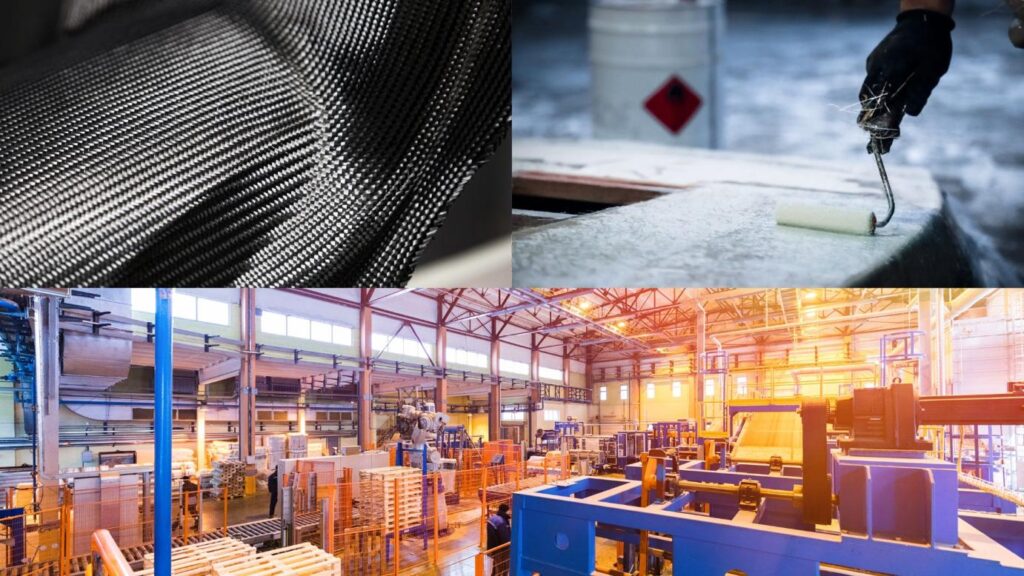
Revolutionizing the Automotive Industry: The Power of Composite Materials
The automotive industry has undergone a significant transformation over the years, with advancements in technology driving innovation and change. One area that has revolutionized the automotive industry is the use of composite materials. Composite materials, which are made by combining two or more materials with different properties, offer numerous advantages over traditional materials in terms of strength, weight reduction, and design flexibility. In this article, we will explore how composite materials are revolutionizing the automotive industry and shaping the future of transportation.
The Rise of Composite Materials
Composite materials have gained popularity in various industries due to their unique properties and performance characteristics. In the automotive sector, the demand for lightweight materials has increased significantly in recent years. Composite materials, such as carbon fiber reinforced polymers (CFRP) and glass fiber reinforced polymers (GFRP), have emerged as game-changers in achieving weight reduction without compromising structural integrity.
Lightweight Design for Enhanced Performance
One of the key advantages of using composite materials in the automotive industry is their exceptional strength-to-weight ratio. Unlike traditional materials like steel, composites offer high strength with significantly lower weight. This weight reduction translates into improved fuel efficiency, increased range for electric vehicles, and enhanced overall performance.
Design Flexibility and Versatility
Composite materials offer designers and engineers unparalleled flexibility when it comes to shaping and molding automotive components. Unlike metal, which is rigid and difficult to shape, composites can be molded into complex geometries, allowing for innovative and aerodynamic designs. This design freedom enables automakers to create vehicles with improved aerodynamics, reduced drag, and better overall aesthetics.
Composite Materials in Automotive Applications
The use of composite materials in the automotive industry extends to various applications, ranging from body panels to structural components. Let’s explore some key areas where composite materials are making a significant impact.
1. Body Panels and Exterior Components
Composite materials are increasingly being used for manufacturing body panels and exterior components of vehicles. These materials offer superior resistance to corrosion, impact, and fatigue compared to traditional metal panels. Additionally, composites can be easily molded into intricate shapes, providing automakers with endless possibilities for designing visually appealing and aerodynamically efficient exteriors.
2. Structural Components
Composite materials are playing a crucial role in the development of lightweight and robust structural components in automobiles. Components such as chassis, frame reinforcements, and suspension parts made from composites offer excellent strength, stiffness, and durability while reducing overall weight. This weight reduction contributes to improved vehicle dynamics, better handling, and increased energy efficiency.
3. Interior and Comfort Features
Composite materials are not limited to the exterior of vehicles but also find extensive use in interior and comfort features. From dashboard panels to seat structures, composites offer a perfect balance of strength, aesthetics, and weight reduction. Additionally, composites provide superior acoustic and thermal insulation properties, enhancing the overall driving experience.
FAQs about Revolutionizing the Automotive Industry: The Power of Composite Materials
FAQ 1: What are composite materials?
Composite materials are materials made by combining two or more different materials with distinct properties. The resulting composite exhibits superior performance characteristics compared to its individual components.
Answer: Composite materials are a combination of different materials that offer unique properties and performance characteristics. These materials are used in various industries, including the automotive sector, due to their lightweight, high strength, and design flexibility.
FAQ 2: Why are composite materials revolutionizing the automotive industry?
Composite materials are revolutionizing the automotive industry due to their ability to provide weight reduction, improved fuel efficiency, enhanced performance, and design freedom. These materials offer automakers the opportunity to create lighter, stronger, and more fuel-efficient vehicles.
Answer: Composite materials have gained significant traction in the automotive industry due to their numerous advantages. They help reduce vehicle weight, increase fuel efficiency, improve performance, and provide design flexibility. By using composite materials, automakers can create vehicles that are lighter, stronger, and more efficient.
FAQ 3: What are the advantages of using composite materials in automotive applications?
The advantages of using composite materials in automotive applications include weight reduction, improved fuel efficiency, increased range for electric vehicles, enhanced performance, design flexibility, and resistance to corrosion and fatigue.
Answer: Composite materials offer several advantages in automotive applications. They are lightweight, leading to reduced vehicle weight and improved fuel efficiency. Composite materials also provide design flexibility, allowing automakers to create innovative and aerodynamic vehicle designs. Additionally, composites offer resistance to corrosion and fatigue, ensuring durability and longevity.
FAQ 4: Are there any challenges in using composite materials in the automotive industry?
While composite materials offer numerous benefits, there are some challenges associated with their use in the automotive industry. These challenges include higher material costs, complex manufacturing processes, and limited recycling infrastructure.
Answer: While composite materials have several advantages, there are also challenges associated with their use in the automotive industry. These challenges include higher material costs compared to traditional materials, complex manufacturing processes, and the need for specialized manufacturing equipment. Additionally, the recycling infrastructure for composite materials is still in its early stages of development.
FAQ 5: How will the use of composite materials shape the future of transportation?
The use of composite materials will play a significant role in shaping the future of transportation. With their lightweight nature, composite materials will continue to drive the development of more fuel-efficient vehicles, including electric and autonomous cars. Additionally, composite materials will enable the design of innovative and sustainable transportation solutions.
Answer: Composite materials will have a profound impact on the future of transportation. They will contribute to the development of lightweight and fuel-efficient vehicles, including electric and autonomous cars. The design flexibility offered by composites will also lead to innovative and sustainable transportation solutions.
FAQ 6: Are there any environmental benefits associated with the use of composite materials in the automotive industry?
Yes, there are environmental benefits associated with the use of composite materials in the automotive industry. The lightweight nature of composites contributes to reduced fuel consumption and lower emissions. Additionally, composite materials can be recycled, further reducing their environmental impact.
Answer: Yes, the use of composite materials in the automotive industry offers environmental benefits. The lightweight nature of composites leads to reduced fuel consumption and lower emissions, contributing to a greener transportation sector. Furthermore, composite materials can be recycled, minimizing waste and promoting sustainability.
Composite materials have revolutionized the automotive industry by providing lightweight, high-strength, and versatile alternatives to traditional materials. The use of composites in the automotive sector has led to significant advancements in vehicle design, performance, and sustainability. As technology continues to advance, composite materials will play an increasingly vital role in shaping the future of transportation. The automotive industry is poised for a transformative journey with the power of composite materials leading the way.









